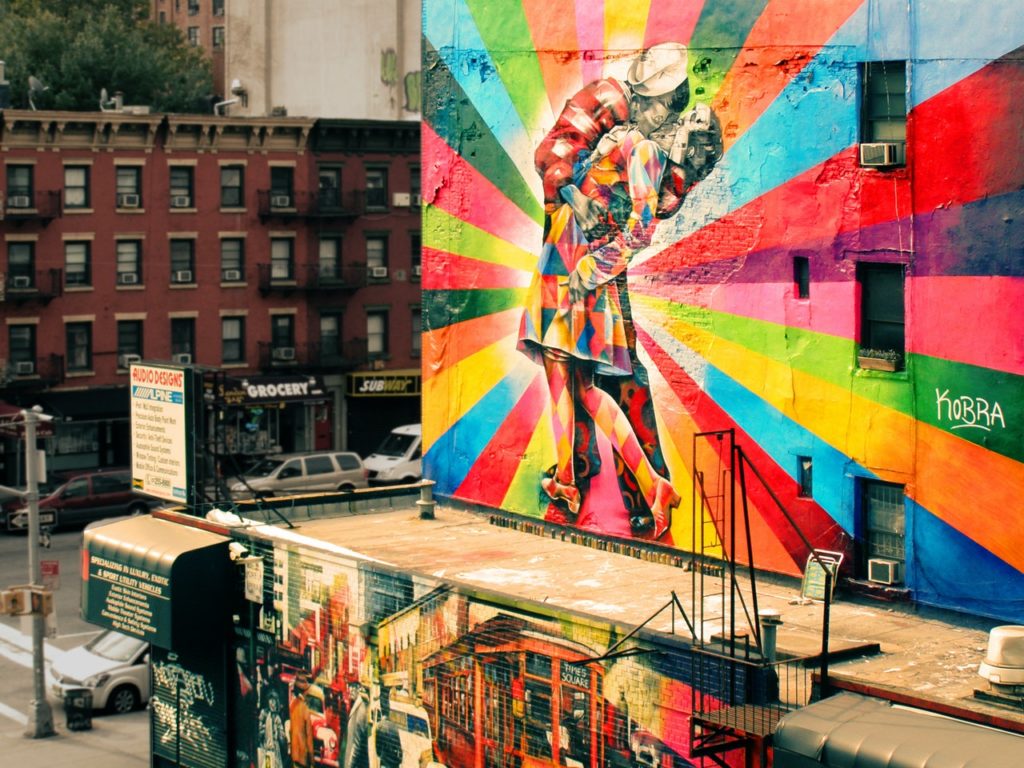A great piece of art can transform the object, but more so the people who see and appreciate it. We see this all the time in street arts. We often get bombarded by amazing street arts when we visit certain communities. These have the power to transform that community, especially disadvantaged ones. How? Why? One of the most popular examples of this is in Rio de Janeiro, where the youth has become attracted to joining community art organisations since the late 2000s. Street art has since transformed Rio de Janeiro, so much so that trips are organised specifically to view these works.
It’s not only in Brazil’s capital that art transformed a whole community. The 798 Art Zone in Beijing is an effort to encourage contemporary Chinese artists to showcase their works. The Brisbane Street Art Festival is another glowing example of how art develops positive partnership and collaboration in a community. It is this same reason why there has been such a huge interest in Brisbane’s art community, so much so that a performing arts academy is seen as a world-class institution that empowers communities with indigenous cultural performances, contemporary dance, music, and acting.
Healthy Interaction in Public Spaces
In the past, people meet unintentionally in public spaces such as markets, grocery stores, and public parks. This has become far less frequent in the past years because of social media. People are more connected than ever before, but they are also less physically engaged. Architects, engineers, and urban planners focus more on the aesthetics of a community rather than looking for ways to engage people.
Art can bring back that sense of community. The more urban planners and designers use art in the community, the more likely people will congregate there. What brings more people to the same public space is not the popular coffee shop or the high-end boutiques. People bring people. Engagement and collaboration happen when there is a common interest shared.
So, whether it’s street art, a performance in the park, or a random musical act in public, local governments should work to bring back the community together through art. The appreciation of art is a safe space. It encourages interaction and develops the core of the community.
Civic Participation Through Festivals
Farmers’ markets and festivals are not just celebrations. They are a way to recognise the diversity of the community. It is through these public events that the community realises its similarities and differences. They open the eyes of the community to the differences that make them unique in the first place. As a result, they stand up for social causes. They advocate for their community members and neighbours. Many times, social movements and advocacies started from these community events and activities.

Youth Engagement
Community organisers usually focus on the youth when they host art and cultural activities. Art is a way for kids to let their creative identities loose. It opens up avenues for them. Instead of succumbing to peer pressure and vices, they become enamoured with honing their skills and talents. This allows the youth to develop their confidence as they work with professional artists and mentors who can guide them through the right path.
Many out-of-school youths benefited from these activities. They bridge the gap left wide open by the inability of these kids’ families to send them to school. Many artists credit their music for saving their lives. For them, art has been transformative, powerful, and life-saving.
Cultural Preservation
When people are involved in the aesthetics and design of a place, they become invested in preserving these spaces. That’s what street art and even street music can do. Once the community becomes accustomed to passing by a certain street musician on their way to work every morning, they will balk at the idea of the local government prohibiting street performances. They develop ownership of these works of art. They will try to protect what these mean to the community as they realise such works bring unity and cohesion.
The citizens will feel a sense of responsibility in preserving the cultural integrity of their community. Whether it’s by supporting a local diner or watching a local theatre performance, their loyalty to preserving these will be strengthened. Citizen involvement in public decision-making is critical to the community. The best communities, after all, are those led by community members and grassroots groups.
Art is therapeutic and transformative. It has the power to turn a life around. You’re probably cognisant of that, seeing how art has saved certain people—from celebrities to social media influencers to the regular joe you know in your street. So, if art can save a person, how much more can it do for a community that throws its support for it? The promises are immeasurable.

